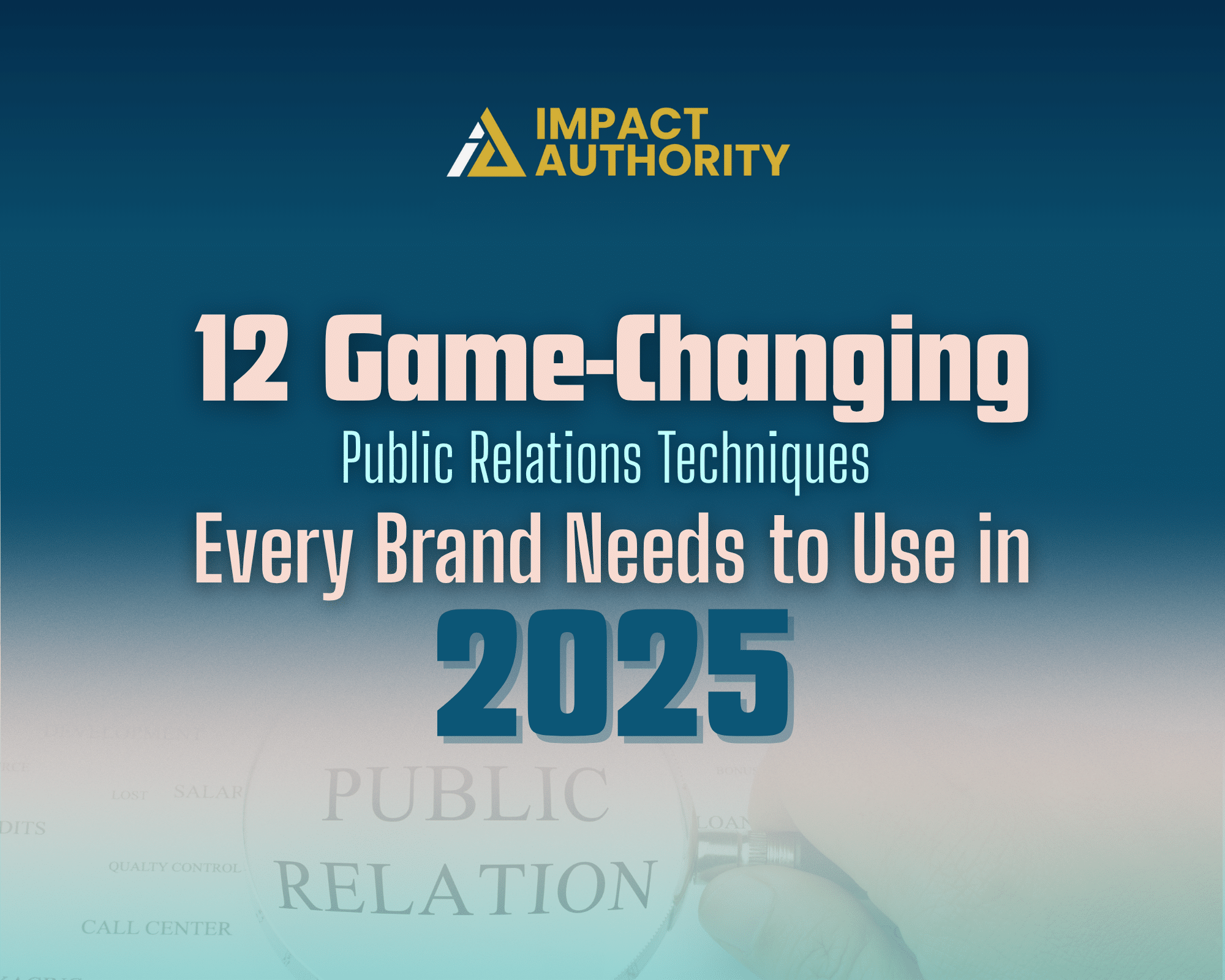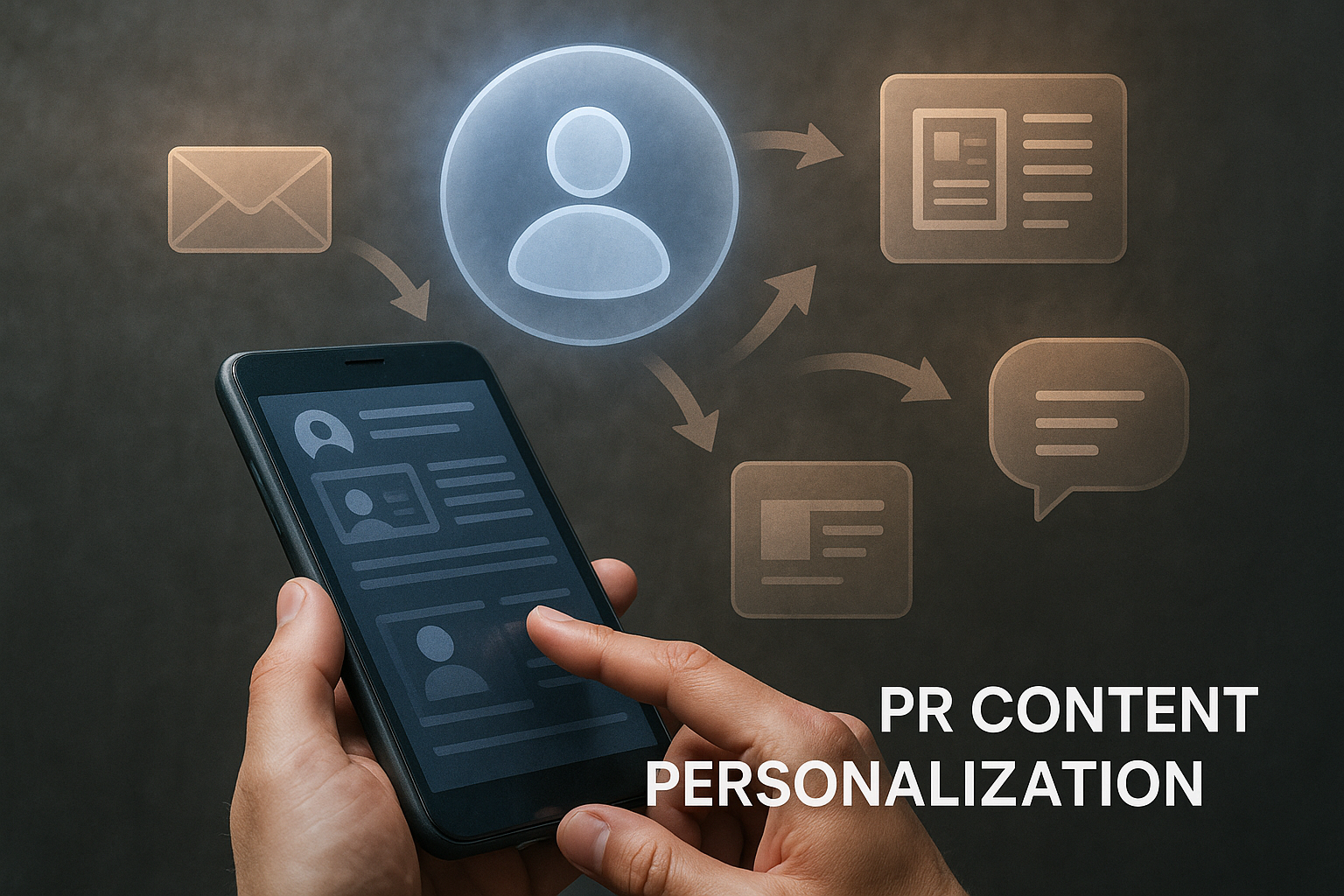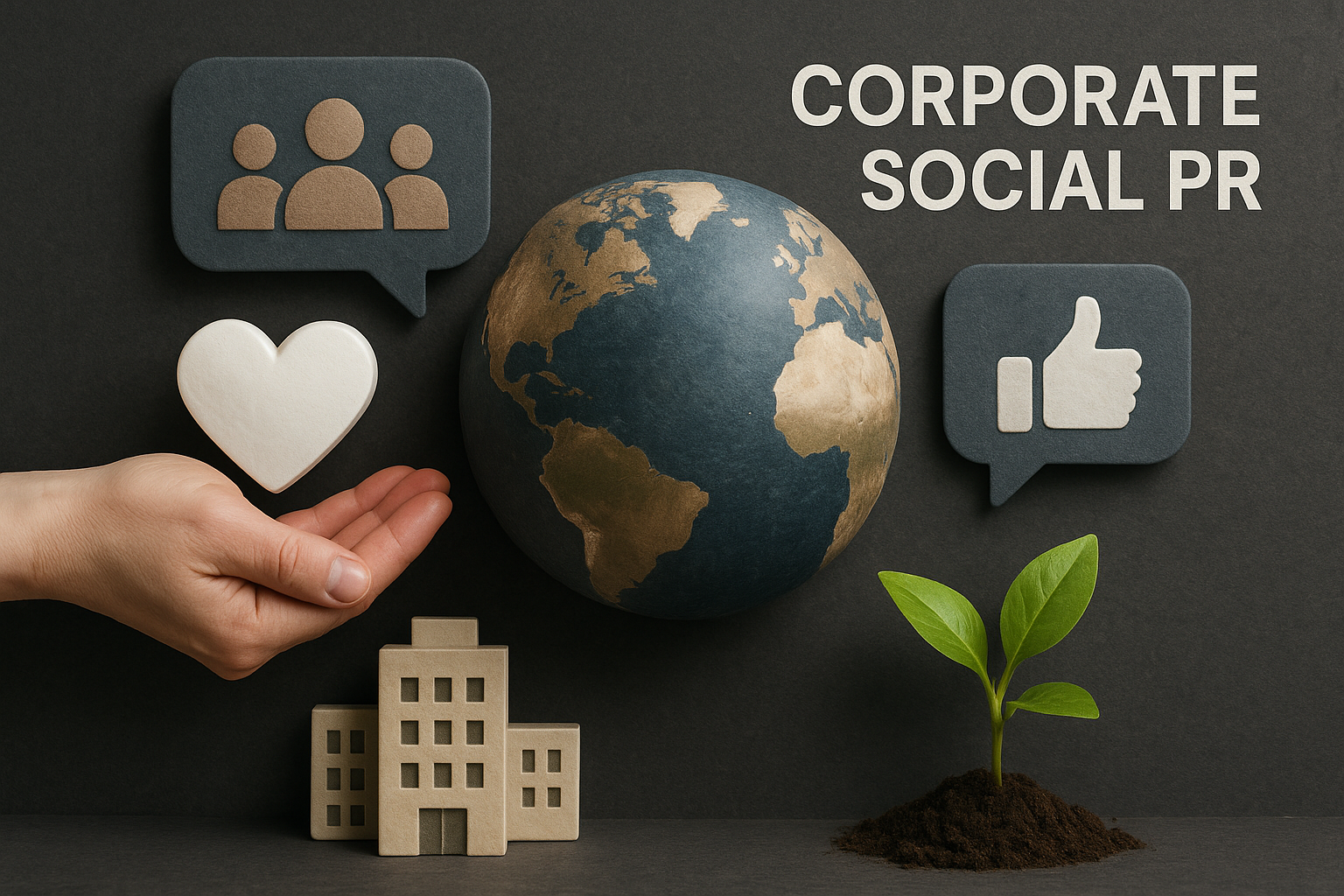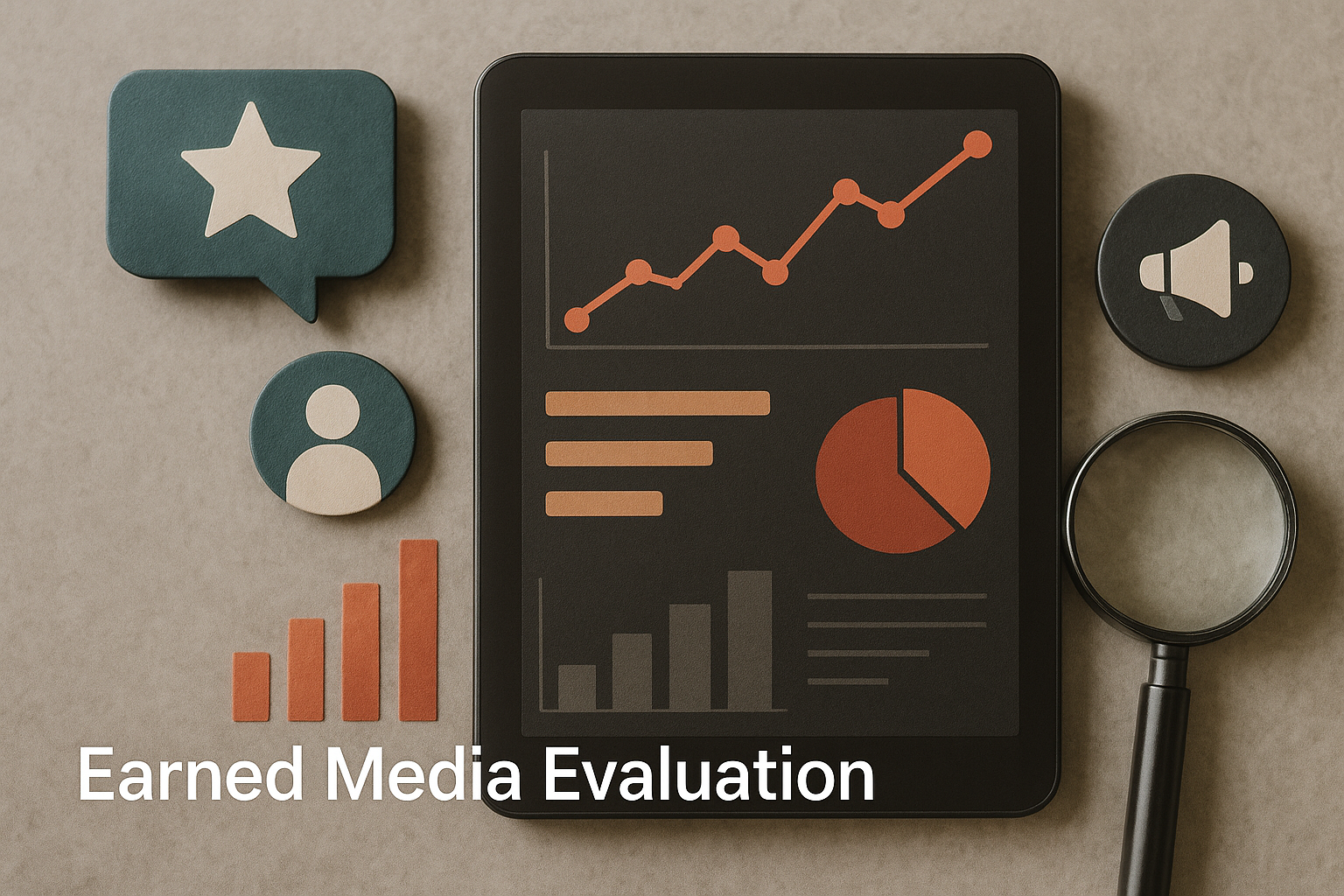We live in a world where attention spans are shorter than a TikTok. Blink, and your chance to make an impression is gone. That’s the challenge.
Your brand only has a few seconds—maybe less—to stop the scroll, spark interest, and stick in someone’s mind. One great headline. One bold quote. One story that hits just right. That’s all it takes to catch fire. Miss that chance? You get drowned out in the noise.
That’s where PR comes in.
Not just old-school PR—the kind with press kits and yearly press conferences. We’re talking about the new kind. Smart. Fast. Digital. Real. Public relations today isn’t just about getting into the news. It’s about shaping how people see you. Building trust. Starting conversations. Driving engagement in ways ads simply can’t.
But here’s the thing:
The old ways of doing PR don’t work anymore. You can’t just send out a press release and hope it gains traction. Journalists aren’t randomly discovering stories, and nobody’s checking their fax machine. The game has completely changed.
Modern PR consultancy services offer a smarter, faster, and more flexible approach. They blend compelling storytelling with data-driven strategies, connect media outreach with influencer engagement, and align brand messaging with SEO performance. These services are designed for the digital age—yet they still resonate with real people.
So, how does it all work? And more importantly, how do you make it work for your brand?
Let’s break it down.
What Are Public Relations Techniques (And Why Do They Matter Now More Than Ever)?
Image by Cheska Poon from Pixabay
Public relations techniques are strategic methods brands use to influence public perception, manage communications, and build strong relationships with media, consumers, and stakeholders.
Whether you’re launching a startup, managing a reputation crisis, or growing thought leadership, PR methods give your story legs, wings, and wheels.
But today, it’s not just about media mentions. It’s about earned trust, digital visibility, and community resonance.
A well-crafted PR strategy doesn’t just inform—it transforms opinion.
Build a PR Strategy Before You Tackle the Tactics
Let’s get one thing straight—even the flashiest PR techniques will fall flat without a solid strategy to back them up. You wouldn’t start building a house without a blueprint, right? The same goes for your public relations game plan.
Here’s how to lay that foundation right.
1. Define Exactly What You Want to Achieve
Before you even draft a press release or think about who to pitch to, stop and ask yourself:
What does success look like?
- Are you trying to build brand awareness in a crowded market?
- Do you need to attract investors and build credibility fast?
- Want to drive more traffic to a new product launch or website?
- Or maybe you’re dealing with reputation damage and need to rebuild trust?
Whatever your goal is, make it crystal clear and make it SMART:
Specific, Measurable, Achievable, Relevant, and Time-bound.
For example:
❌ “We want more media coverage.”
✅ “We want 5 media placements in mid-tier tech publications within 90 days.”
That level of focus makes everything else easier.
2. Know Your Audience Like You Know Your Best Friend
You can’t connect with someone if you don’t understand what keeps them up at night.
Great PR starts with empathy.
Dig deep into:
- What your audience wants
- What they fear or struggle with
- What kind of content do they already consume and trust
Use tools like:
- Google Analytics to see user behavior
- Quora and Reddit to spot trending questions
- X (formerly Twitter), LinkedIn, and niche forums to track sentiment
You’ll uncover gold; real words, real problems, and real interests. And that’s what makes your messaging stick.
3. Craft a Message That’s Impossible to Ignore
Here’s where brands often miss the mark. They focus too much on what they do and not enough on why anyone should care.
So, ask yourself:
- What problem are we solving?
- Why are we uniquely qualified to solve it?
- What transformation can we promise our audience?
Your core message should be:
- Clear: No jargon, no confusion
- Compelling: It should tap into a need or emotion
- Consistent: Every campaign, post, and quote should align with it
Pro Tip: Test your messaging on someone who’s not in your industry. If they get it—and they’re interested—you’re on the right track.
4. Pick the Right Channels (Don’t Just Shout into the Void)
You’ve got your message. Now, where should it live?
Enter the PESO model, a modern framework to distribute your PR content across four key types of media:
- Paid Media
This includes anything you spend money on—social ads, sponsored blog posts, and branded content.
Why it matters: It’s fast and scalable. Great for launches or awareness boosts.
- Earned Media
This is what most people think of when they hear “PR”—media coverage, product reviews, influencer shoutouts.
Why it matters: It builds third-party credibility. You’re not just talking about yourself—others are doing it for you.
- Shared Media
All things social: Twitter, LinkedIn, TikTok, YouTube. This is where your audience talks back.
Why it matters: It builds community. Plus, social buzz often leads to earned media.
- Owned Media
Your blog, your newsletter, your website—channels you control completely.
Why it matters: You shape the narrative. It’s also great for SEO and long-term brand authority.
In essence, smart brands don’t pick just one—they find a mix that aligns with their goals and resources.
12 Public Relations Techniques That Actually Work Today
Image by OpenClipart-Vectors from Pixabay
1. Story‑First Press Releases (Not Just Info Dumps)
Don’t just report facts, tell a story. Begin with a strong hook: maybe a stat, an arresting quote, or a surprising insight. Then weave in context—why this matters now. Instead of a dry product rollout, frame it around the people behind it. Finally, consider adding visuals such as a chart, a brief video, or an infographic. These grab attention and help journalists connect with your story emotionally.
2. Digital PR + SEO Synergy
Think of digital PR as storytelling with a search-engine twist. It’s not enough to earn mentions; instead, you want backlinks, too. To do this:
- Pitch guest posts to respected industry blogs.
- Use tools like Ahrefs or Semrush to spot content nobody covers yet.
- Work with your content team to weave your PR angle into SEO-friendly content. The result? You gain visibility and value.
3. Influencer and Thought-Leader Collaborations
Influencers aren’t just Instagram celebrities. Think niche podcast hosts, LinkedIn gurus, Substack writers. They’ve built trust with their followers. Partner with them on webinars, guest articles, or co-authored op‑eds. That way, you’re not just talking to an audience—you’re being introduced by someone they already listen to.
4. Newsjacking Done Right
Jumping on trending news isn’t about grabbing headlines; it’s about relevance. Keep tabs on trending topics in your industry. When something relevant breaks, offer timely insights to journalists.
Example: If a major data breach makes headlines, share a cybersecurity expert’s analysis. That way, your voice lands in the right conversations—and fast.
5. Crisis‑Communication Playbooks
Stuff happens. But how you respond defines you. Create a playbook outlining:
- Fast acknowledgment – Days-long delays? Reporters will wonder why.
- Transparent updates – Even small progress shows accountability.
- Plan of action – Explain the steps you’re taking to fix things.
- Follow-up reporting – Once you’ve acted, say so. Show progress.
This sequence builds trust, even when the worst happens.
6. Multimedia Storytelling
Long blocks of text can quickly lose your audience’s attention. So it’s essential to break up your content with rich media like charts, short videos, infographics, and animated timelines to keep readers engaged and make your message more impactful.
- Charts that show trends
- Mini‑documentaries (think 1–2 minute videos)
- Animated timelines
This kind of content does more than inform—it draws people in and gives journalists easy assets to re-share.
7. AI‑Driven Monitoring Tools
You can’t manage what you don’t monitor. Use tools like Meltwater, Brand24, or Mention to:
- Track sentiment in real‑time
- Identify journalists asking for expert quotes
- Spot brand mentions before they blow up
This setup puts you ahead of the curve—so you can respond—not react.
8. Owned‑Media Ecosystem
Own your story by building your own channels:
- A newsroom page where all your press and updates live
- A blog with thought-leadership posts
- A resource hub (FAQs, whitepapers, case studies)
This content fuels SEO, supports earned media, and shows journalists you’re organized and news-ready.
9. Media Training for Spokespersons
No second chances on live TV or radio. Prepare your spokespeople by:
- Drilling short, powerful soundbites
- Anticipating tough questions—and preparing calm, clear responses
- Ensuring they stay on message, even when cornered. The better your people, the better your brand shines.
10. Community‑Led PR Campaigns
Not every campaign needs to go viral. Some work best locally. Think back to Vita Coco’s coconut hut, a small, engaging pop-up that buzzed at ground level. Host events, sponsor local causes, or launch pop-ups where your audience is. It builds real connections and real loyalty.
11. Measuring What Actually Matters
Ditch vanity metrics. Instead, track metrics that signal real brand impact:
- Media quality: Are your mentions in top-tier outlets?
- Share of voice: Are you talking more than your competitors?
- Backlink authority: Do your backlinks come from strong domains?
- Message pull‑through: Are your key messages showing up in coverage?
Using tools like Muck Rack, Cision, or Google Analytics helps you measure—not guess—your PR success.
12. Human‑Centered Brand Narratives
Your audience connects with people, not products. So tell stories about real impact. Example:
“We helped reduce burnout in 10,000 teachers.”
That hits harder than product specs. Share transformation stories: lives changed, communities impacted, teams empowered. Let your brand be the catalyst for good.
Each of these techniques isn’t just a checkbox—they’re strategies that work today, in our digital-first, connection-hungry world. And when you use them together, they build momentum—and credibility—that lasts.
Practical Public Relations Methods: A Quick Checklist
- Write a story-based press release
- Reach out to micro-influencers
- Set up Google Alerts + Brand24
- Respond to journalist queries on HARO
- Build a digital newsroom
- Monitor KPIs monthly
PR Toolkit: Essential Tools You Can’t Ignore
Image by nugroho dwi hartawan from Pixabay
You don’t need a massive tech stack to run smart PR campaigns—but the right tools? Game changers.
From tracking conversations to pitching journalists, here’s a quick breakdown of PR essentials that make your life easier and your strategy sharper:
| Category | Tool | What It Does Best | Pricing Tier (approx.) |
| Monitoring & Listening | Brandwatch | Tracks brand mentions and sentiment across platforms | Starts at $800/month (enterprise) |
| Talkwalker | Real-time alerts + visual content tracking | Custom pricing (mid to enterprise) | |
| Sprout Social | Social monitoring + engagement in one place | From $249/month | |
| Pitching & Engagement | HARO | Connects you with journalists looking for sources | Free with paid tiers |
| Muck Rack | Pitch tracking, media database, journalist monitoring | Custom pricing (starts ~$5K/yr) | |
| Prowly | All-in-one PR CRM + press release builder | From $119/month | |
| Content & Distribution | Canva | Create press visuals, infographics, media kits | Free & Pro ($12.99/month) |
| BuzzSumo | Spot trending stories, headlines, and influencers | Starts at $119/month | |
| Google Data Studio | Build easy-to-read reports from your PR data | Free | |
| Measurement & Reporting | Cision | Deep media analytics and coverage reports | Custom (enterprise pricing) |
| Google Analytics | Tracks referral traffic from press hits | Free | |
| Ahrefs | Backlink quality + content gap analysis | From $99/month | |
| Moz | Domain authority, keyword rank tracking, SEO support | From $99/month |
Start with a few, test what works for you, and scale as you grow. No need to overcomplicate it.
Fill-In PR Templates & Swipe Files
Sometimes, you just need a solid starting point.
Templates take the guesswork out of writing and pitching. Here are a few that can save you hours—and get better results, too:
Pitch Template
Hi [Name],
I came across your recent piece on [Topic] and loved your perspective. I’m reaching out because I have a story that could add a fresh angle to your coverage. [Brief context of your story or expert insight].
Would you be open to a quick chat or receiving more details?
Best,
[Your Name + Contact Info]
Expert Quote Submission Format
- Name:
- Title & Company:
- Industry context (1–2 lines):
- Quote (2–3 sentences max, written like spoken words):
- Optional: Link to photo, LinkedIn, or press kit
Press Release Checklist
- Headline with a hook
- Strong lead paragraph: who, what, when, where, why
- 1–2 engaging quotes
- Short bullet points for clarity
- Links to visuals: image, chart, short video
- Contact info + short company bio
Pro tip: Turn these into a PDF download for your readers. Handy, printable, and reusable.
Future PR Trends to Watch in 2025–2026
PR moves fast, and the way brands communicate is evolving.
Here’s what’s gaining momentum (and worth paying attention to):
1- AI‑Powered Personalization
Tools can now write subject lines based on past journalist behavior. Pitches are getting smarter—and more relevant.
2- Virtual Events & Interactive PR
Webinars, 3D product launches, virtual booths. These aren’t just pandemic-era solutions—they’re becoming part of the norm.
3- Authenticity Over Perfection
Highly polished, brand-safe content is losing ground. Audiences crave honesty, behind-the-scenes looks, and even vulnerability. A founder talking about failure? That’s magnetic.
4- Sustainability & Ethics
No longer a niche. People want to know what your brand stands for—and what it actually does about it. Communicate impact clearly, not just values.
Stay ahead by staying aware.
Pitfalls to Avoid: What Most Brands Get Wrong
Let’s be real. Even the smartest teams trip up. But if you know where the traps are, you can sidestep them.
Ignoring Micro-Moments
Someone tags your brand with a question. A journalist quotes your competitor. An influencer posts an unboxing. If you wait days to respond, the moment’s gone.
Getting Lost in Metrics
Pageviews and press hits feel good, but do they matter? Look deeper. Did people care? Did it move the needle? Track meaning, not just numbers.
Treating PR as One-Offs
A single press release won’t build your brand. Great PR is ongoing—more like planting seeds than making noise.
Forgetting to Update Your Crisis Plan
That Google Doc from 2019? Probably outdated. Crisis moves fast. Have clear roles, up-to-date contacts, and a plan you’ve actually walked through with your team.
In short, mistakes aren’t the problem—being unprepared is.
FAQ: Public Relations Techniques, Decoded
What are public relations techniques?
These are methods used to manage communication between an organization and its public. This includes storytelling, press releases, influencer outreach, media relations, and more.
What is the difference between PR strategies and techniques?
- PR strategy: The overarching game plan.
- PR technique: A specific move or action within that strategy (e.g., writing a press release, pitching to journalists).
Do PR techniques still work in the age of social media?
Absolutely. In fact, they’re even more essential. Social media amplifies both good and bad press, making strategic PR even more critical.
How can I use PR to grow my small business?
Start with:
- Local media outreach
- Joining community events
- Partnering with local influencers
- Building a press kit and digital newsroom
How is digital PR different from traditional PR?
Digital PR focuses on online channels—SEO, influencer marketing, blogs, and digital newsrooms—whereas traditional PR often centers around TV, print, and radio.
How do I measure the success of PR campaigns?
Track:
- Media coverage
- Backlinks
- Referral traffic
- Brand mentions
- Sentiment analysis
Are AI tools replacing PR professionals?
No—but they’re powerful allies. AI tools can automate monitoring and optimize content, but relationships and strategy still require a human touch.
Conclusion: What’s Your Brand’s Next Big Moment?
If you’re still reading, one thing’s clear—you’re not here to play small. You’re not after quick mentions or fleeting headlines. You’re building something that lasts—something people want to talk about, share, and remember.
Digital PR Services isn’t about press for the sake of press. It’s about shaping perception with purpose, consistency, and impact. The true power of modern public relations lies in how your brand shows up online—in search results, in social feeds, in conversations that matter. It’s not just about media coverage. It’s about cultural relevance, brand credibility, and staying part of the digital dialogue.
So the question isn’t just, “Which technique should I try first?”
It’s, “What truth does my brand stand for—and how can I make the world care about it?”
Whether you’re launching a campaign, handling a crisis, or simply trying to stay top of mind in an oversaturated space, PR gives you the power to craft the narrative instead of chasing it. But only if you approach it with clarity, empathy, and a plan.
And that’s the challenge, and the opportunity, you’re now equipped to take on.




